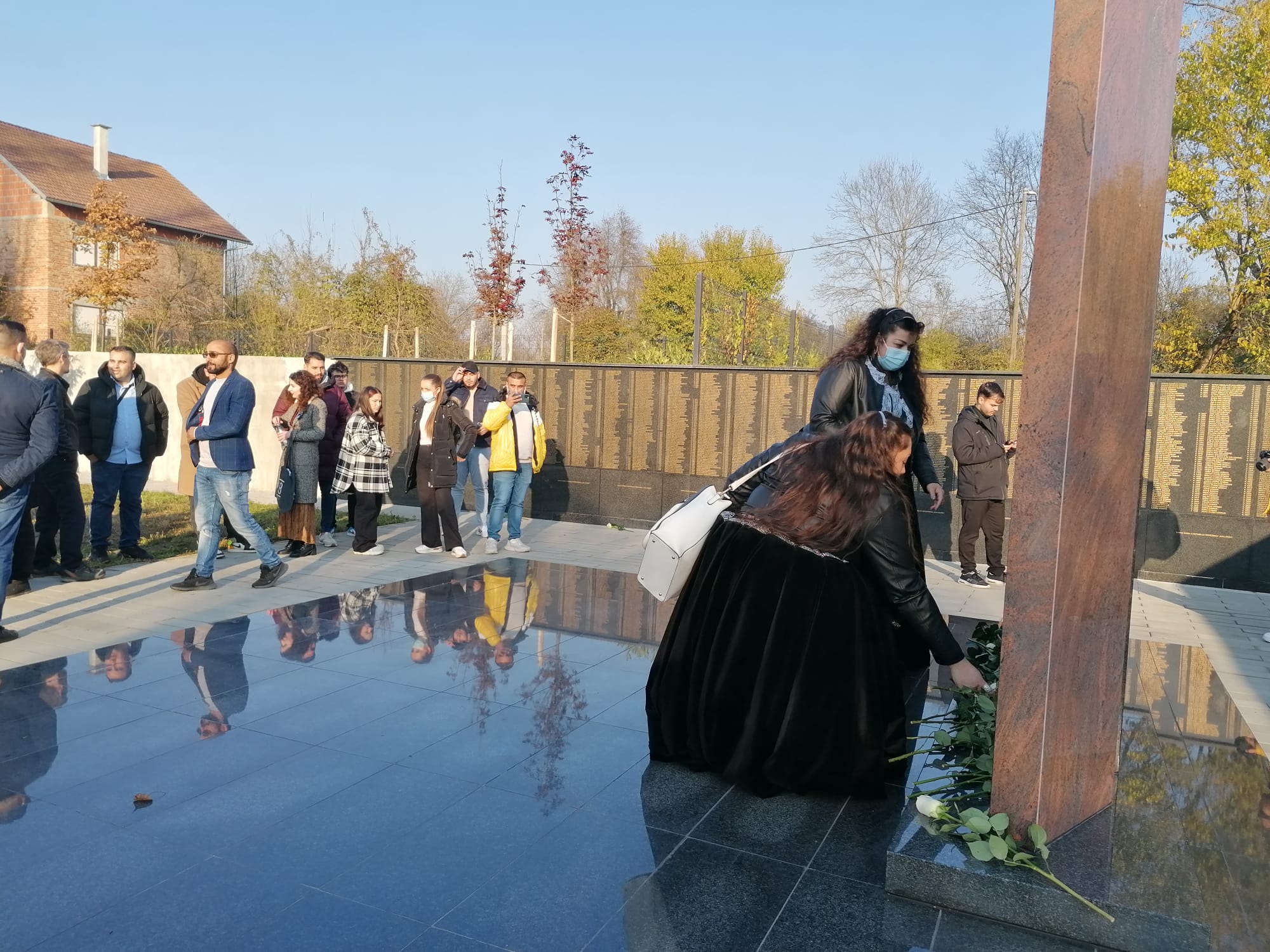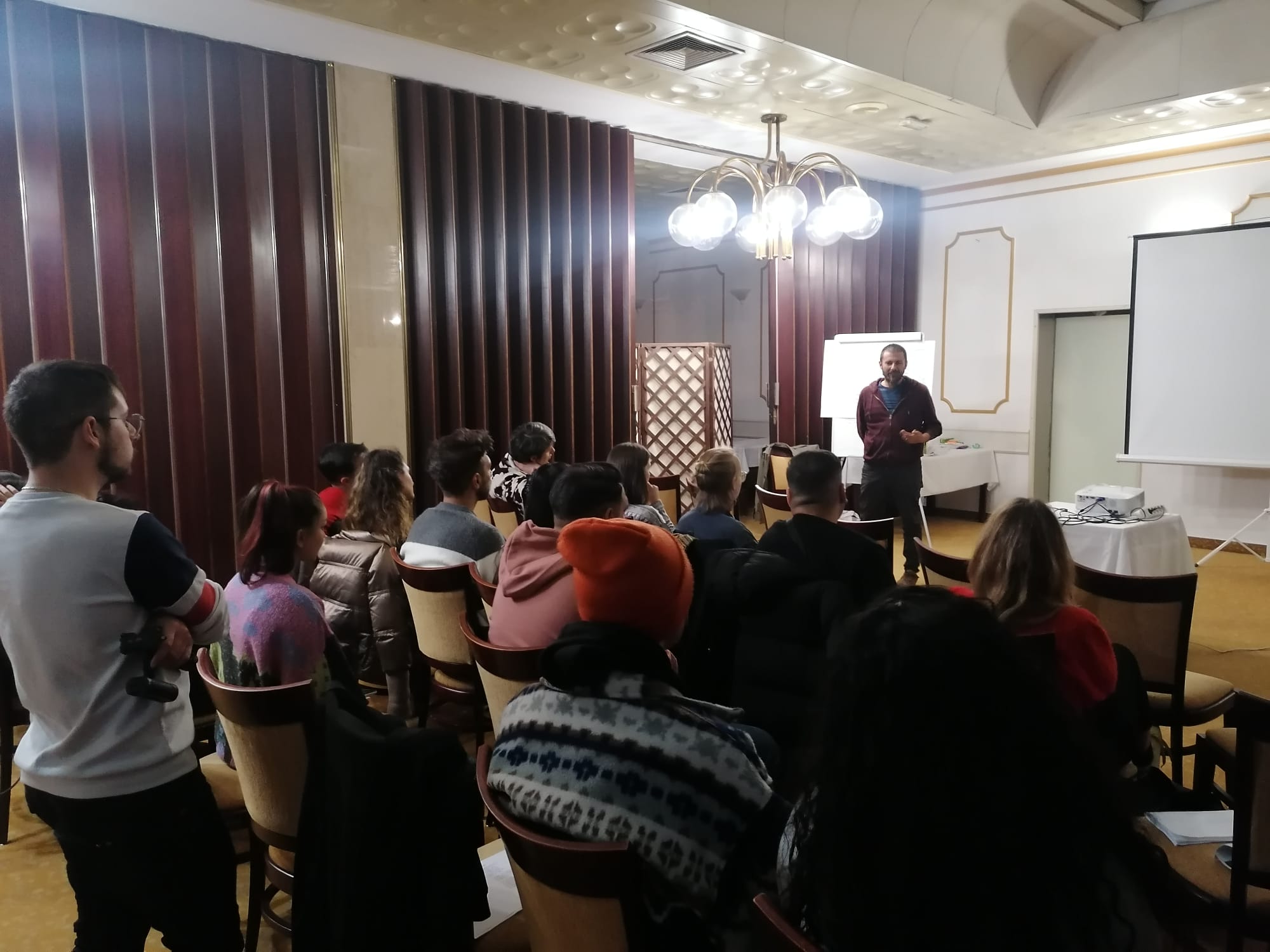From October 29 to November 2 our colleague Anabel Carballo from the Spanish team took part of the learning programme about the Roma genocide in Zagreb organised by the Sinti and Roma Documentation Centre in Heidelberg and TernYpe within the Dikh He Na Bister initiative. The learning programme included the visit to Jasenovac Memorial Site and the Roma cementery in Uštica.
 The learning programme brought together around 40 Roma and non Roma youngsters from 12 European countries and some facilitators and experts. During the first day, participants were divided in three working groups about Digital Memory, the RomArchive and about Music and Holocaust. The programme also included a very interesting lecture about the Roma genocide in the Western Balkans during World War II by historian Danijel Vojak and the testimony of Irvin Mujcic, survivor of the genocide in Srebrenica.
The learning programme brought together around 40 Roma and non Roma youngsters from 12 European countries and some facilitators and experts. During the first day, participants were divided in three working groups about Digital Memory, the RomArchive and about Music and Holocaust. The programme also included a very interesting lecture about the Roma genocide in the Western Balkans during World War II by historian Danijel Vojak and the testimony of Irvin Mujcic, survivor of the genocide in Srebrenica.
On the second day, participants visited Jasenovac camp, a former extermination camp in the Independent State of Croatia. In fact, Jasenovac was the biggest one outside Poland and the only one which was not managed by the Nazis. It was controlled by the Ustaša, Croatian fascist movement that nominally ruled the Independent State of Croatia during World War II.
The visit was concretely in the Memorial Site which is in the immediate vicinity of the former camp (Camp III, Brickworks) and the Roma Memorial Center in Uštica. Jasenovac Memorial Site is deserted, the original sites of buildings and execution sites are marked by earth mounds and hollows. But thanks to new digital memory methods, participants were able to imagine and see how it used to be like. The only visible monument/landmark is the Flower Memorial which the path to it is paved with the railway sleepers. They denote symbolically part of the preserved railway track used to transport prisoners to the camp.
 Regarding the Roma Memorial Center, it is situated in Uštica and near the Roma cemetery (mass graves), where at least 17,000 Roma were deported, tortured and killed during World War II. So far, 21 mass graves have been discovered in the village of Uštica with the bodies of murdered Roma, including numerous women and children. One of the goals of the Roma Memorial Center is to name all the murdered Roma, a very complex work because there were not registrations of the deported Roma. Currently, 16173 Roma have been identified of which 5688 were Roma children. At the Roma cemetery, mass graves, participants took part of a commemoration ceremony to honour the victims. During the commemoration, the names of some of the Roma murdered there were read and the testimonies of some of the survivors were read by the participants. The commemoration concluded with the anthem of the Roma, “Gelem, Gelem”, sang by a group of Romani women from Finland, part of the Finnish Roma Youth Network. Afterward, participants made a floral tribute at the Roma Memorial Site.
Regarding the Roma Memorial Center, it is situated in Uštica and near the Roma cemetery (mass graves), where at least 17,000 Roma were deported, tortured and killed during World War II. So far, 21 mass graves have been discovered in the village of Uštica with the bodies of murdered Roma, including numerous women and children. One of the goals of the Roma Memorial Center is to name all the murdered Roma, a very complex work because there were not registrations of the deported Roma. Currently, 16173 Roma have been identified of which 5688 were Roma children. At the Roma cemetery, mass graves, participants took part of a commemoration ceremony to honour the victims. During the commemoration, the names of some of the Roma murdered there were read and the testimonies of some of the survivors were read by the participants. The commemoration concluded with the anthem of the Roma, “Gelem, Gelem”, sang by a group of Romani women from Finland, part of the Finnish Roma Youth Network. Afterward, participants made a floral tribute at the Roma Memorial Site.
The learning programme was based on non-formal education methods and developed approaches for youth work on memory education at historical sites. The main goal was to strengthen active citizenship for values such as Human Rights, respect of diversity and non-discrimination, as well as to share and develop strategies to combat antigypsyism, racism and extremism in Europe.

